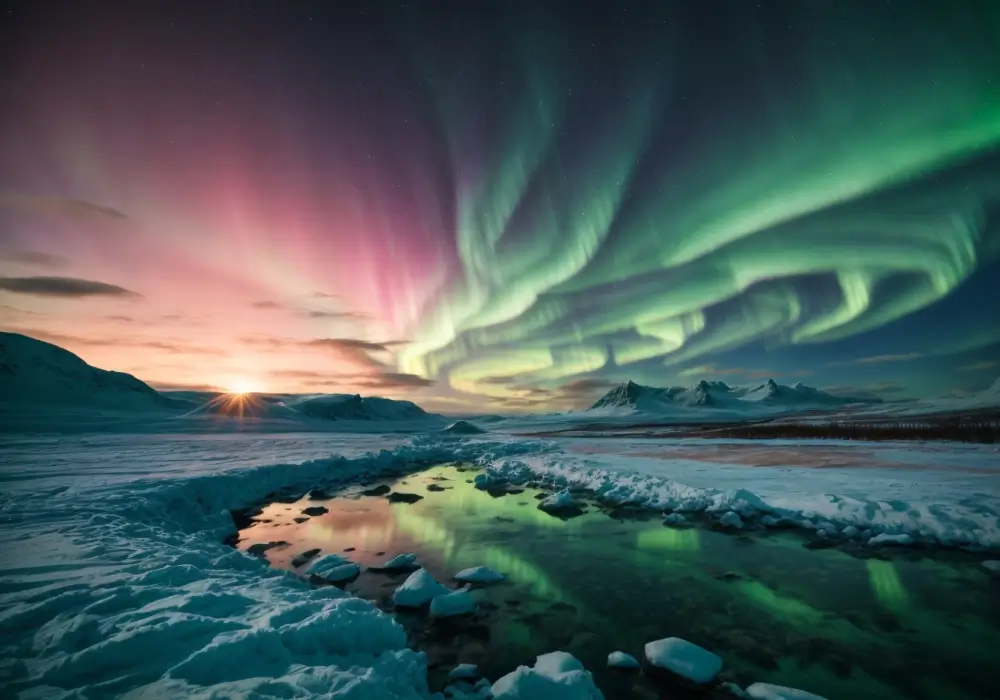
Severe solar storms can cause the strongest northern lights activity
The upcoming intense solar storms will bring the most powerful northern lights to the night sky over the next 18 months.
According to expert forecasts, the most powerful northern lights will undoubtedly be seen over the next 18 months as a result of the upcoming intense solar storms.
Each wave of the aurora borealis, commonly referred to as the northern lights, has its source in a specific part of the Sun’s surface. It is expected that these celestial illuminations will be abundant during the next eighteen months due to increasing solar activity. Since late 2022, there has been a significant rise in sunspot observations, a pivotal factor in forecasting the northern lights. In some cases, this increase has expanded the geographic range where this natural light spectacle can be observed.
Severe solar storms coming
The highest northern lights activity of the next decade and past 20 years could begin within the next 18 months if it continues, according to scientists. This spectacular event will extend further south and will be visible more regularly and from a wider range of places around the world.
Skywatchers are excited about the forecast, said Mark Misch, a scientist at the National Oceanic and Atmospheric Administration (NOAA) and the University of Colorado Boulder.
The Solar Cycle 25 Prediction Panel, a scientific association supported by NASA and the National Oceanic and Atmospheric Administration (NOAA) that forecasts sunspot activity, had initially predicted that A lower than average number of 110 to 115 sunspots Solar activity peaked in 2019. However, updated forecasts from many scientists indicate the possibility of a significant increase in solar activity.
Experts expect that solar activity will increase significantly until the fall of 2024.
According to Misch, this season represents the highest probability of seeing the aurora borealis. Space weather is caused by sunspots, which are characterized by their dark appearance, lower temperature, and increased magnetic activity on the Sun’s surface.
This happens during coronal mass ejections, cases in which magnetic anomalies eject particles into space. These particles travel nearly 94 million miles with the solar wind before encountering gaps in Earth’s magnetic field and interacting with atmospheric elements, creating a dazzling, dazzling display of vibrant colors in the sky.
The most powerful northern lights
Because Earth’s magnetic fields are weaker near the polar regions, aurora borealis tend to be more visible there.
However, the viewing range of the northern lights has actually been enhanced this year due to increased solar activity. Farther south, some areas in Wisconsin, Minnesota and even Arizona have confirmed recent sightings.
Solar weather is not the only factor for stronger northern lights activity. During the equinoxes, Earth’s magnetic field amplifies, turning its weak regions toward the Sun, making it easier for space particles to enter Earth’s atmosphere. This alignment results in a tripling of aurora observations at low latitudes during magnetic perturbations. That’s why experts say they expect an increase in the northern lights soon.
Sunspots recorded since the 17th century provide a historical perspective. Misch suggests that sunspots exist Portals for comparing recent solar activity With the past.






